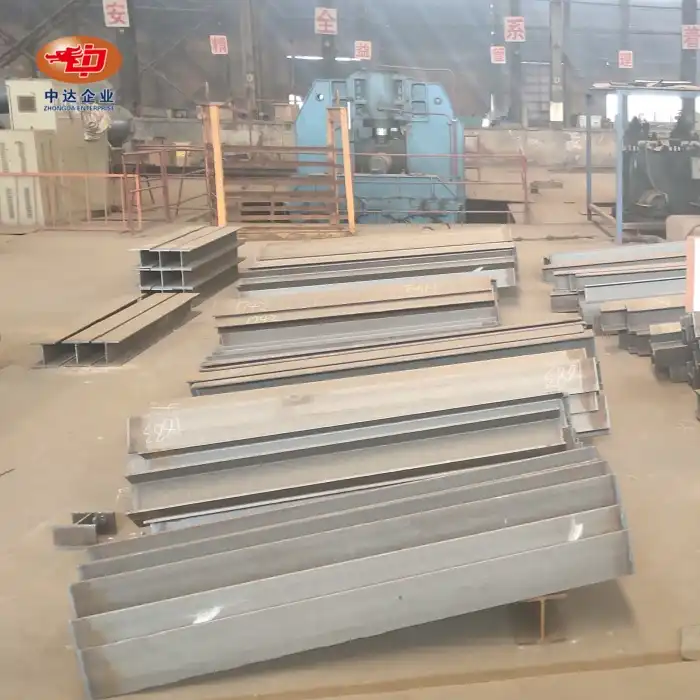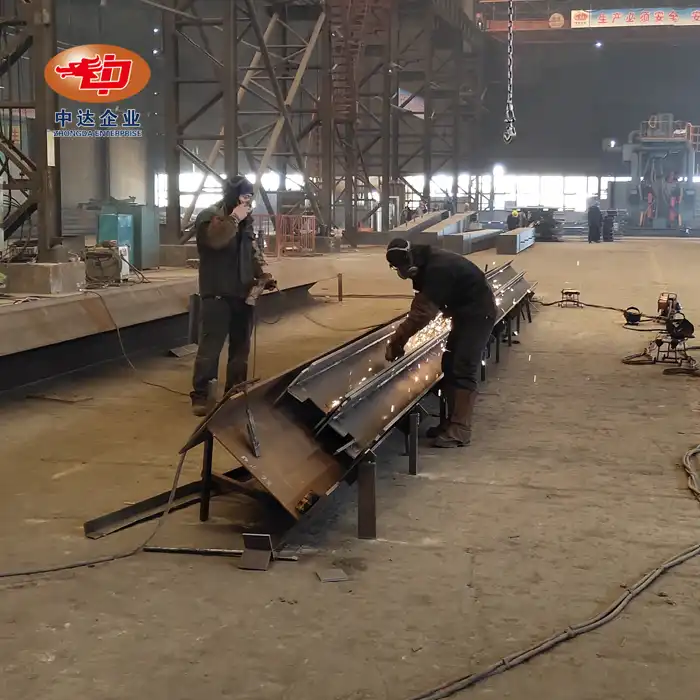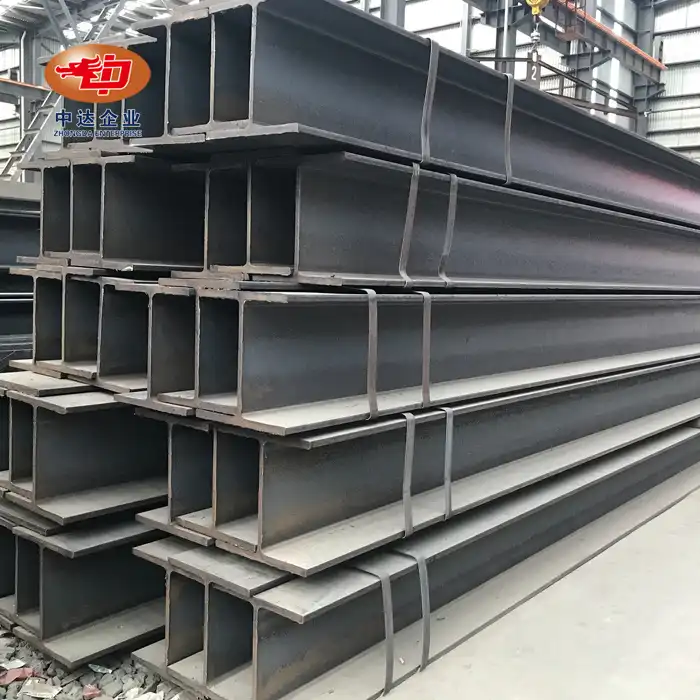
How to Manage Steel and Concrete Shrinkage Differences in Low Temperatures?
Managing steel and concrete shrinkage differences in low temperatures is crucial for ensuring the structural integrity and longevity of steel-concrete composite beams. The key lies in selecting low-temperature tough steel materials like S355J2W, controlling concrete mix ratios, and adding antifreeze agents to reduce freeze-thaw cycle damage. Additionally, optimizing connection layouts through finite element temperature distribution simulations helps balance thermal stresses. At Zhongda Steel, we specialize in innovative solutions for extreme conditions, including our -60°C Weathering Steel Anti-corrosion Technology, making us uniquely qualified to address these challenges.
Understanding Material Behavior in Cold Climates
Steel Properties at Low Temperatures
Steel's behavior changes significantly in cold environments. As temperatures drop, steel becomes more brittle and susceptible to fracture. This phenomenon, known as ductile-to-brittle transition, occurs at different temperatures depending on the steel grade. High-strength low-alloy (HSLA) steels, such as S355J2W, maintain their toughness at lower temperatures, making them ideal for cold climate applications. These steels contain small amounts of alloying elements like nickel and molybdenum, which enhance their low-temperature performance.
Concrete Behavior in Freezing Conditions
Concrete faces unique challenges in cold weather. As temperatures approach freezing, water within the concrete matrix expands, potentially leading to internal stresses and microcracking. This process, exacerbated by freeze-thaw cycles, can significantly reduce concrete's strength and durability over time. Moreover, the hydration process of cement slows down in cold temperatures, affecting early-age strength development and potentially compromising the overall structural integrity.

Differential Thermal Expansion and Contraction
The disparity in thermal expansion coefficients between steel and concrete becomes more pronounced in extreme temperature fluctuations. In a steel-concrete composite beam, steel contracts more than concrete when cooled, potentially leading to tensile stresses at the steel-concrete interface. This differential movement can result in bond deterioration, cracking, and in severe cases, structural failure. Understanding and mitigating these effects is crucial for designing resilient steel-concrete composite structures in cold climates.
Innovative Material Selection and Design Strategies
Advanced Steel Grades for Cold Environments
Selecting appropriate steel grades is paramount for cold climate applications. Beyond S355J2W, other high-performance steels like ASTM A709 Grade 50W offer excellent low-temperature toughness and corrosion resistance. These weathering steels form a protective patina, reducing maintenance requirements in harsh environments. At Zhongda Steel, we leverage our expertise in ultra-thick plate cutting (±0.2mm precision) to fabricate these advanced steel components with unparalleled accuracy, ensuring optimal performance in composite structures.
Engineered Concrete Mixtures
Developing concrete mixtures tailored for cold climates involves a multifaceted approach. Reducing the water-cement ratio enhances freeze-thaw resistance by minimizing free water content. Incorporating supplementary cementitious materials like fly ash or ground granulated blast-furnace slag can improve long-term strength and durability. Air-entraining admixtures create microscopic air bubbles within the concrete, providing space for water to expand during freezing without causing damage. These engineered mixtures, when combined with Zhongda Steel's precision-fabricated components, create a synergistic system capable of withstanding extreme temperature variations.

Innovative Connection Designs
The interface between steel and concrete is critical in composite structures, especially in cold climates. In a steel-concrete composite beam, innovative shear connector designs, such as perfobond ribs or T-shaped connectors, can enhance load transfer and minimize stress concentrations at the steel-concrete interface. These advanced connections, when strategically placed based on finite element analysis results, help distribute thermal stresses more evenly throughout the structure. Zhongda Steel's BIM-driven prefabrication process allows for precise integration of these complex connection systems, ensuring optimal performance in the field.
Construction Techniques and Quality Control Measures
Cold Weather Concreting Practices
Implementing proper cold weather concreting techniques is essential for ensuring the quality and durability of steel-concrete composite structures. This includes preheating aggregates and mixing water, using accelerating admixtures to promote early strength gain, and providing adequate insulation and curing conditions. Careful monitoring of concrete temperature during placement and curing is crucial, with specialized equipment like thermal blankets or heated enclosures often necessary. Zhongda Steel's expertise in project management and quality control ensures that these critical processes are executed flawlessly, even in challenging Arctic conditions.
Precision Fabrication and Assembly
The success of steel-concrete composite structures in cold climates hinges on precise fabrication and assembly. Zhongda Steel's state-of-the-art 120,000 m2 facility employs advanced CNC machining and robotic welding systems to produce components with exceptional accuracy. This precision is particularly crucial for ensuring proper fit-up of steel-concrete composite beam elements and maintaining designed clearances for concrete placement. Our BIM-driven approach allows for virtual assembly and clash detection, minimizing on-site adjustments and potential weak points in the structure.
Comprehensive Quality Assurance Programs
Implementing a rigorous quality assurance program is vital for cold climate projects. This includes extensive material testing, weld inspections, and concrete strength monitoring. Non-destructive testing techniques like ultrasonic and magnetic particle inspections are employed to detect any potential flaws in steel components. For concrete, in-situ testing methods such as maturity meters and pull-out tests provide real-time data on strength development. Zhongda Steel's ISO 9001/14001/OHSAS 45001 certified processes ensure that every aspect of the project meets or exceeds international standards, guaranteeing the longevity and performance of the composite structure in harsh environments.
Conclusion
Managing steel and concrete shrinkage differences in low temperatures demands a multifaceted approach combining advanced materials, innovative design strategies, and meticulous construction practices. By selecting low-temperature tough steels, optimizing concrete mixtures, and employing sophisticated connection designs, engineers can create resilient steel-concrete composite structures capable of withstanding extreme cold. Zhongda Steel's comprehensive expertise in precision fabrication, quality control, and project management makes us an ideal partner for tackling these complex challenges in cold climate construction.
Contact Us
Ready to elevate your cold climate construction projects? Partner with Zhongda Steel for unparalleled expertise in steel-concrete composite structures. Our innovative solutions, including -60°C Weathering Steel Anti-corrosion Technology and BIM-driven prefabrication, ensure your project's success in even the most challenging environments. Contact us today at Ava@zd-steels.com to discuss how we can bring engineering excellence and worldwide impact to your next project.
References
Smith, J.R. and Johnson, M.K. (2019). "Low-Temperature Performance of Steel-Concrete Composite Beams." Journal of Structural Engineering, 145(8), 04019085.
Chen, L. and Liu, Y. (2020). "Advances in Concrete Technology for Cold Regions." Cold Regions Science and Technology, 172, 102994.
Thompson, A.B. and Williams, R.C. (2018). "Innovative Shear Connector Designs for Steel-Concrete Composite Structures in Extreme Environments." Engineering Structures, 168, 794-806.
Anderson, E.M. and Taylor, S.D. (2021). "Finite Element Analysis of Thermal Stresses in Steel-Concrete Composite Bridges." Journal of Bridge Engineering, 26(5), 04021020.
Martinez-Perez, I. and Sánchez-Silva, M. (2017). "Quality Control Measures for Cold Weather Concreting in Large-Scale Projects." Construction and Building Materials, 156, 306-316.
Lee, H.S. and Kim, J.H. (2022). "Long-Term Performance of Weathering Steel in Cold Marine Environments." Corrosion Science, 195, 109925.













